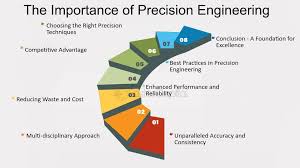In a world driven by technological advancement, precision engineering has become the cornerstone of modern gear design. From aerospace components to outdoor survival tools, the quest for perfection has transformed not only how we build equipment but also how we use it. This evolution is marked by a relentless pursuit of accuracy, efficiency, and adaptability, resulting in tools and devices that perform with unmatched reliability.
Early Beginnings: The Roots of Precision
Precision engineering has its roots in the Industrial Revolution, where machine tools like lathes and milling machines laid the foundation for creating standardized parts. Early artisans used manual tools to craft intricate designs, a labor-intensive process that paved the way for modern techniques. Over time, these efforts gave rise to higher tolerances and finer details, shaping the gear industry as we know it.
Materials Revolution: Strength Meets Versatility
One of the biggest leaps in precision engineering came with the development of advanced materials. Steel alloys, carbon composites, and ceramics allowed engineers to design gear that was lighter, stronger, and more durable. For example, titanium has become a favorite in aerospace and tactical equipment due to its incredible strength-to-weight ratio. The introduction of nanotechnology further refined materials, enabling unprecedented accuracy in manufacturing.
The Digital Leap: CAD and CNC Machines
The advent of computer-aided design (CAD) and computer numerical control (CNC) machines revolutionized the precision engineering process. Engineers could now design complex geometries with pinpoint accuracy and replicate them flawlessly. CNC machines ensured consistent quality, allowing mass production of highly intricate components. This digital transformation reduced human error and increased efficiency, opening the door for industries like medical devices, automotive, and defense to thrive.
Stealth and Precision: A Tactical Evolution
For tactical and survival gear, precision engineering has been a game-changer. Modern suppressors, for example, are engineered to minimize noise and muzzle flash while maintaining durability and effectiveness. Precision machining of firearm barrels ensures consistent accuracy over long distances, giving users a critical advantage in demanding environments. Additionally, advancements in coatings, such as DLC (diamond-like carbon), have enhanced wear resistance and stealth properties.
Everyday Applications: Precision for All
While the tactical and industrial sectors push the boundaries of precision engineering, its influence extends to everyday tools. Take, for instance, multi-tools with seamlessly integrated components, ergonomic knives with laser-honed edges, or even bicycles designed with aerodynamic precision. The same principles used in crafting gear for extreme conditions are now accessible to consumers seeking high-quality, reliable equipment.
The Future: Where Innovation Leads
The future of precision engineering lies in automation and artificial intelligence. Autonomous systems are already enabling faster prototyping, while AI-driven algorithms optimize designs for maximum performance. Additive manufacturing (3D printing) has also emerged as a disruptive technology, allowing engineers to create complex parts that were once impossible to produce using traditional methods.
Moreover, the push toward sustainability has inspired engineers to develop eco-friendly materials and processes without compromising precision. Biodegradable polymers, for instance, are being explored for gear applications where disposability is key.
Precision engineering has come a long way from its early days of manual craftsmanship. Today, it blends advanced materials, cutting-edge technology, and innovative processes to deliver gear that is not only functional but also tailored to the demands of modern life. As industries continue to innovate, the impact of precision engineering will extend further, shaping tools and technologies that enhance our capabilities and redefine what’s possible.
Whether in the hands of a tactical operator or an outdoor enthusiast, precision gear represents the pinnacle of engineering—a marriage of science and art that drives progress forward.
